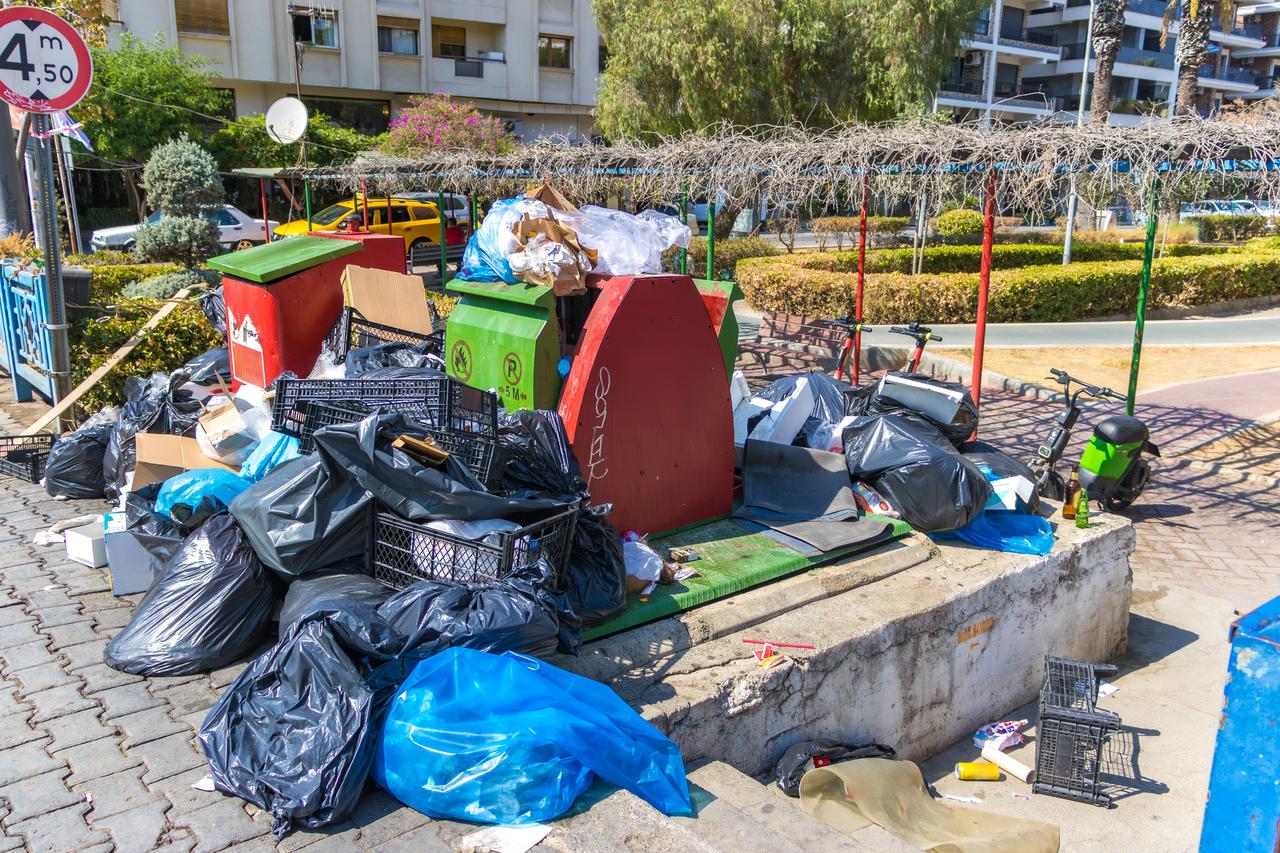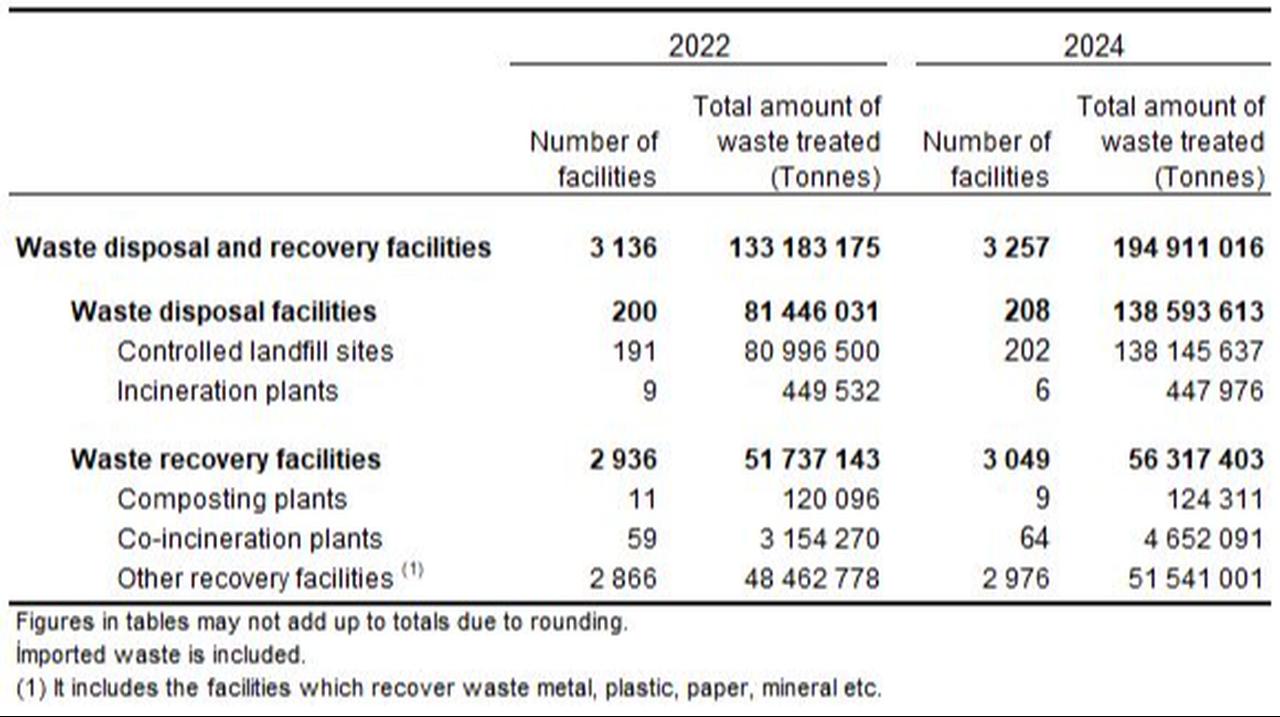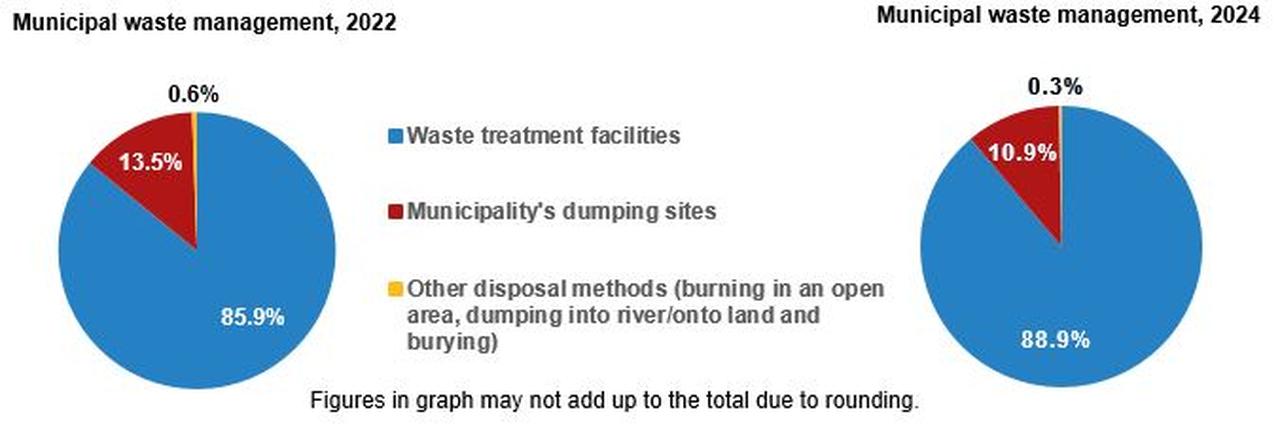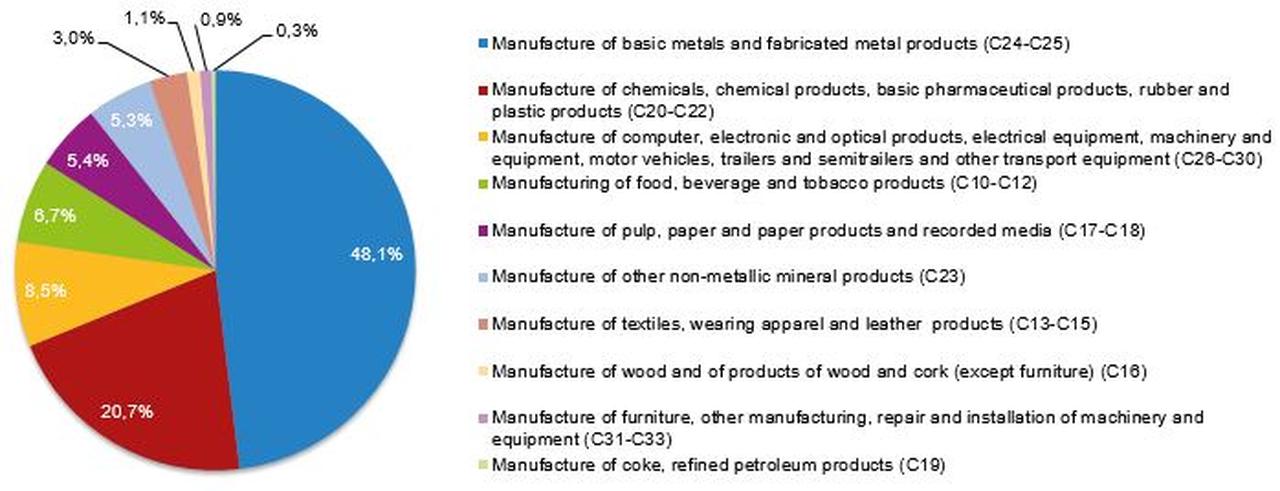
Türkiye produced a total of 120 million tonnes of waste in 2024, including 42.2 million tonnes of hazardous waste, according to new figures released by the Turkish Statistical Institute (TurkStat).

The total covers waste from manufacturing industry establishments, mining establishments, thermal power plants, organized industrial zones (OIZs), and households. OIZs refer to designated industrial parks with shared infrastructure. Hazardous waste is treated under licensed processes due to its potential risks.
Manufacturing generated 24.4 million tonnes of waste, of which 4.2 million tonnes were hazardous. Of the total, 70.1% was sold or sent to licensed treatment facilities, 12.1% was recovered within the facility or used as fill/returned to nature, 10.8% went to landfill, 2.6% to incineration or co-incineration, 2.4% was collected by municipalities or OIZ managements, 1.8% was stored on-site, and 0.1% was disposed of by other methods.

Mining produced 40.5 million tonnes of waste excluding overburden. Including overburden, total mining waste reached 1.061 billion tonnes, 99.99% of which consisted of mineral waste.
Of this total, 85.1% was disposed of in overburden heaps, tailings dams or controlled landfill sites, 12.5% was used for backfilling, and 2.4% was recovered or disposed of by other methods.
Thermal power plants generated 26.5 million tonnes of waste, including 10,400 tonnes of hazardous waste. Among non-hazardous streams, 84.6% was ash and slag and 15.4% other waste.
In treatment, 86.9% went to ash disposal areas, ash dams or controlled landfills, while 13.1% was sent to licensed facilities, used to backfill mines or quarries, or handled by other methods.

Activities run by OIZ directorates (such as infrastructure and wastewater treatment) produced 397,000 tonnes of waste, including 196,000 tonnes of hazardous waste; 95.5% was sent to waste treatment facilities and 4.5% disposed of by other methods.
Out of 1,401 municipalities, 1,392 provided waste services and collected 32.3 million tonnes of municipal waste.
Of this, 88.9% went to waste treatment facilities, 10.9% to municipal dumping sites, and 0.3% was disposed of by other methods. The average municipal waste collected per person was calculated as 1.09 kilograms per day. After municipal wastewater treatment, 353,000 tonnes (dry matter) of sludge were generated.

Waste disposal and recovery facilities treated 195 million tonnes of waste in total: 139 million tonnes were disposed of and 56 million tonnes recovered. Controlled landfills accounted for 138 million tonnes of disposed waste and incineration plants for 448 thousand tonnes.
Co-incineration plants burned 4.7 million tonnes with energy recovery. Composting reached 124,000 tonnes, and other licensed recovery facilities recovered a combined 51.5 million tonnes of materials such as metal, plastic, paper, and mineral waste.